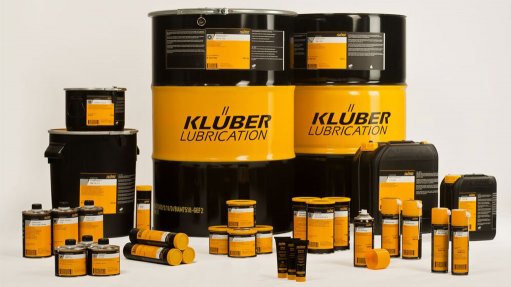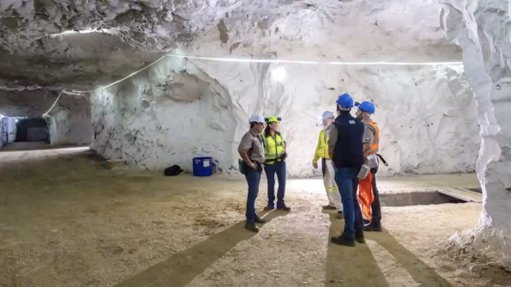TMM anti-collision system regulations may have implications for mining equipment OEMs



ENS Africa mine and occupational health and safety practice head Pieter Colyn
ENS Africa mine and occupational health and safety practice executive Warren Hendricks
New sub-regulations added in December 2022 under the Mine Health and Safety Regulations, which are binding on the industry, require that an employer at a mine provide anti-collision systems or devices to automatically retard or stop diesel-powered trackless mobile machines (TMMs) to prevent collisions between the machines and pedestrians or other TMMs.
While the statutory obligation to provide such systems is placed on the employer, in practical terms, the employer will rely on original-equipment manufacturers (OEMs) to design, supply and manufacture such systems, law firm ENS Africa mine and occupational health and safety practice head Pieter Colyn and ENS Africa mine and occupational health and safety practice executive Warren Hendricks said during a briefing on October 3.
Employers will also rely on OEMs to play a significant role in the practical assessment and testing of anti-collision systems in different mining environments, they pointed out.
Since the promulgation of Regulation 8.10 in February 2015, and which the new sub-regulations were added to, several employers have already expended significant costs to assess and implement pedestrian and vehicle detection systems on TMMs at operations.
"A lot of the TMMs that have been manufactured and are in use do not have these anti-collision devices. Further, assessing, testing, designing and supplying these systems may require other OEMs, in addition to the TMM OEM, as the anti-collision systems need to be fitted and their telecommunications systems established to ensure the TMM comes to a dead stop before colliding with a pedestrian or other TMM if the operator takes no action," said Hendricks.
"The new sub-regulations for anti-collision systems on TMMs were promulgated without a transitional period for mines to comply with it. The Department of Mineral Resources and Energy (DMRE) is currently having engagement sessions with the mining industry about the impact of the regulations," he highlighted.
"It is foreseen that, for anti-collision systems, the time required to source, test and effectively assess such systems for practical application at various mining operations in South Africa, and the associated costs, will be substantially greater than for pedestrian and vehicle detection systems," Colyn and Hendricks added.
The Mine Health and Safety Act (MHSA) Section 21 prescribes specific statutory health and safety obligations on OEMs in relation to their products and equipment used at a mine.
"We looked at the new sub-regulations from a product liability perspective in terms of the MHSA regulations, and all articles used at a mine must comply with all the requirements of the Act. This type of equipment [anti-collision systems] is highly technical and advanced and must be supplied, probably by a separate OEM, in such a way as to meet all the regulations of the Act," said Colyn.
Further, implicit in the obligations of OEMs is the necessity to identify hazards and assess risks associated with the use of their products and equipment at a mine. Risk assessments should be conducted such as to be reasonably practicable, in particular with reference to which of the role-players would be best placed to conduct the risk assessment.
"A generic risk assessment, which often occurs in practice, and is set out in an OEM manual, may not be deemed reasonably practicable in terms of the MHSA, albeit depending on specific circumstances at a mine.
"In such cases, the systems to be provided may have to be tailored-made to the particular risks and hazards, operational environment and requirements of an employer at a mining operation," Hendricks and Colyn said.
An employer may need to approach an anti-collision OEM and communications OEM to deploy such systems, and may need to reassess their risk and how such systems can be added to each mine while meeting the MHSA regulation, said Hendricks.
Practical testing and collaboration among different OEMs can be a challenge and will lead to increased capital expenditure by mines, and all of these considerations must be balanced against the risk of collision.
"If there is a significant risk of collision, these can be addressed in other ways, such as separating the TMMs routes from pedestrian routes, but these solutions are not always practical or possible.
"A mine can approach the DMRE and motivate for exemption on the basis that the regulations are impractical or burdensome, but the decision-making body is the same body that has been assigned to implement the regulations," he said.
One of the key underlying principles identified from the sub-regulations is that South Africa seems to be leaning towards the extreme by requiring that control be taken away from humans and handed over to engineered systems, without determining whether these systems would be safer if taken out of the hands of humans, said Colyn.
"OEMs have, in recent times, been frequently called to provide evidence at formal inquiries related to accidents or incidents that led to the death of a person working or employed at the mine.
"Ensuring a clear, unambiguous and comprehensive risk assessment is prepared with the employer will help to protect the health and safety of the end-user's personnel," said Hendricks.
Comments
Press Office
Announcements
What's On
Subscribe to improve your user experience...
Option 1 (equivalent of R125 a month):
Receive a weekly copy of Creamer Media's Engineering News & Mining Weekly magazine
(print copy for those in South Africa and e-magazine for those outside of South Africa)
Receive daily email newsletters
Access to full search results
Access archive of magazine back copies
Access to Projects in Progress
Access to ONE Research Report of your choice in PDF format
Option 2 (equivalent of R375 a month):
All benefits from Option 1
PLUS
Access to Creamer Media's Research Channel Africa for ALL Research Reports, in PDF format, on various industrial and mining sectors
including Electricity; Water; Energy Transition; Hydrogen; Roads, Rail and Ports; Coal; Gold; Platinum; Battery Metals; etc.
Already a subscriber?
Forgotten your password?
Receive weekly copy of Creamer Media's Engineering News & Mining Weekly magazine (print copy for those in South Africa and e-magazine for those outside of South Africa)
➕
Recieve daily email newsletters
➕
Access to full search results
➕
Access archive of magazine back copies
➕
Access to Projects in Progress
➕
Access to ONE Research Report of your choice in PDF format
RESEARCH CHANNEL AFRICA
R4500 (equivalent of R375 a month)
SUBSCRIBEAll benefits from Option 1
➕
Access to Creamer Media's Research Channel Africa for ALL Research Reports on various industrial and mining sectors, in PDF format, including on:
Electricity
➕
Water
➕
Energy Transition
➕
Hydrogen
➕
Roads, Rail and Ports
➕
Coal
➕
Gold
➕
Platinum
➕
Battery Metals
➕
etc.
Receive all benefits from Option 1 or Option 2 delivered to numerous people at your company
➕
Multiple User names and Passwords for simultaneous log-ins
➕
Intranet integration access to all in your organisation


















